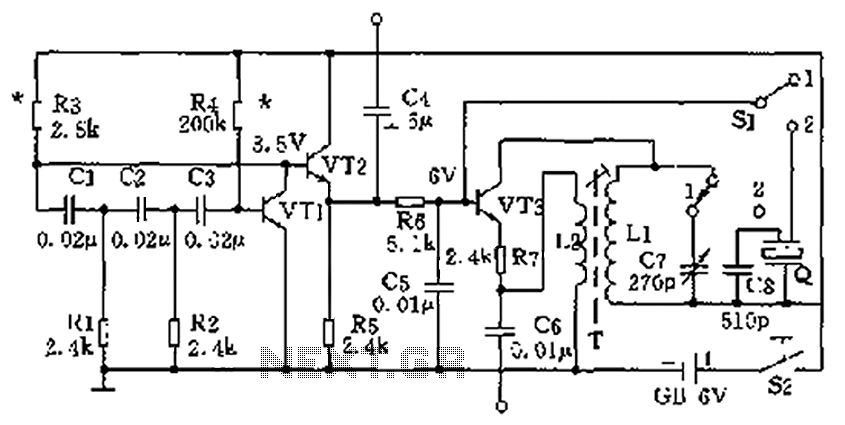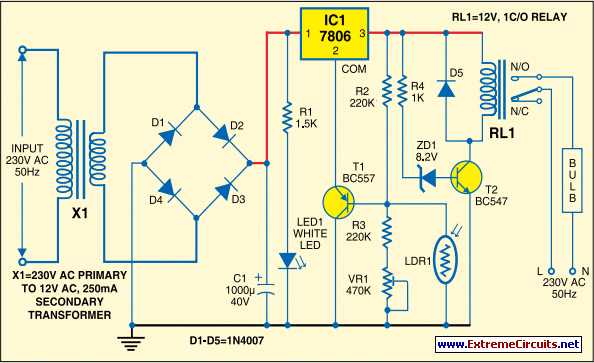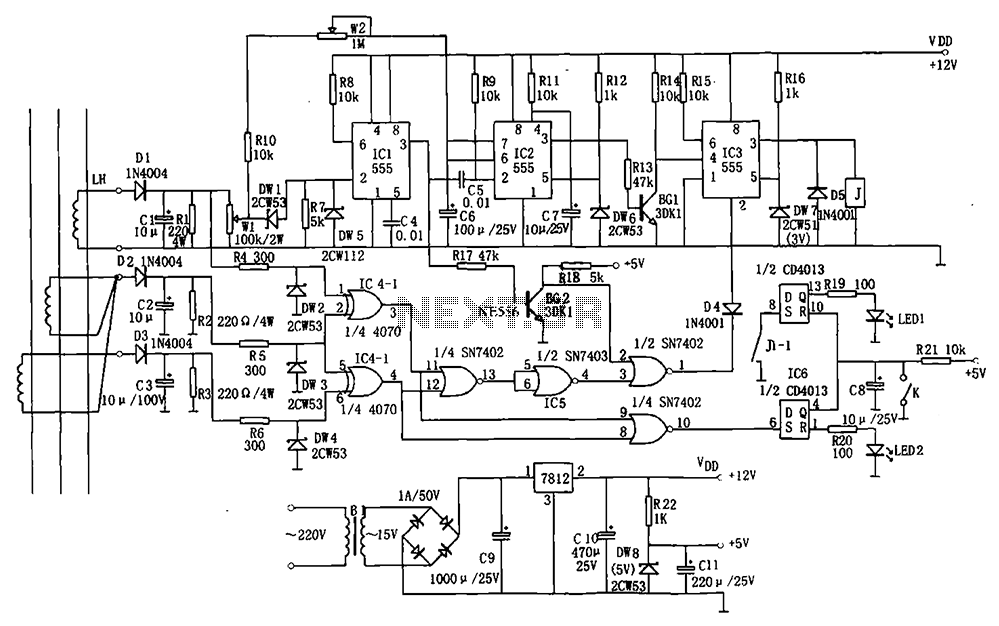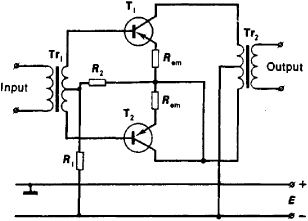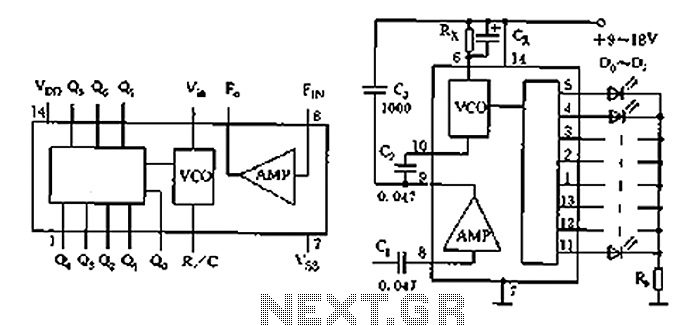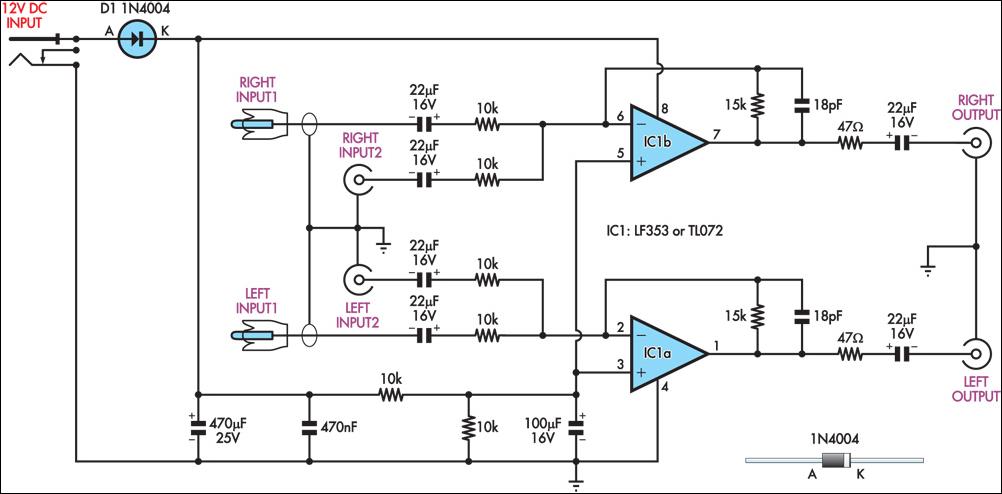
30w class ab amplifier circuit with
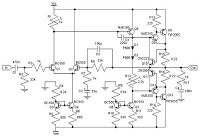
To configure the amplifier, set resistor R1 to its maximum value and resistor R12 to zero. After this adjustment, power on the amplifier. Adjust R1 until the measured output offset is between 30 mV and 100 mV. Once this is achieved, gradually adjust R12 to reach a quiescent current of approximately 120 mA. It is essential to monitor the quiescent current as the amplifier heats up, as it may vary due to voltage drift in the output devices caused by thermal effects. The heatsinks used should have a thermal resistance of 0.6 K/W or lower for two amplifiers.
The setup process for the amplifier requires careful adjustment of resistors R1 and R12 to ensure optimal performance. Setting R1 to its maximum value allows for a wider range of output offset adjustment. The subsequent powering on of the amplifier initiates the operational phase, where the output offset must be measured. A target range of 30 mV to 100 mV is specified to maintain signal integrity and prevent distortion.
Once the output offset is within the desired range, R12 is adjusted to establish the quiescent current. This current is critical for the stable operation of the amplifier, influencing its linearity and overall sound quality. The target quiescent current of approximately 120 mA is a balance between performance and thermal management. It is important to note that the quiescent current may fluctuate as the amplifier reaches its operating temperature due to thermal drift in the output devices. Therefore, continuous monitoring during the warm-up phase is necessary to ensure that the current remains within acceptable limits.
The specification for heatsinks indicates a maximum thermal resistance of 0.6 K/W for two amplifiers. This rating is crucial for effective heat dissipation, preventing overheating, and ensuring the longevity of the amplifier components. Adequate heatsinking not only aids in maintaining the desired quiescent current but also enhances the reliability and performance of the amplifier under varying load conditions. Proper thermal management is essential in high-power applications to avoid thermal runaway and ensure consistent operation.To set the above amplifier up, set R1 to max and R12 to 0. After doing this successfully, power on the amplifier. Set R1 so that the measured output offset is between 30 and 100mV. Once set, adjust R12 slowly to achieve a quiescent current of around 120mA. Keep checking the quiescent current as the amp heats up as it might change due to voltage dr op changes in the output devices caused by heat. The heatsinks should be 0. 6K/W or less for two amplifiers. 🔗 External reference
The setup process for the amplifier requires careful adjustment of resistors R1 and R12 to ensure optimal performance. Setting R1 to its maximum value allows for a wider range of output offset adjustment. The subsequent powering on of the amplifier initiates the operational phase, where the output offset must be measured. A target range of 30 mV to 100 mV is specified to maintain signal integrity and prevent distortion.
Once the output offset is within the desired range, R12 is adjusted to establish the quiescent current. This current is critical for the stable operation of the amplifier, influencing its linearity and overall sound quality. The target quiescent current of approximately 120 mA is a balance between performance and thermal management. It is important to note that the quiescent current may fluctuate as the amplifier reaches its operating temperature due to thermal drift in the output devices. Therefore, continuous monitoring during the warm-up phase is necessary to ensure that the current remains within acceptable limits.
The specification for heatsinks indicates a maximum thermal resistance of 0.6 K/W for two amplifiers. This rating is crucial for effective heat dissipation, preventing overheating, and ensuring the longevity of the amplifier components. Adequate heatsinking not only aids in maintaining the desired quiescent current but also enhances the reliability and performance of the amplifier under varying load conditions. Proper thermal management is essential in high-power applications to avoid thermal runaway and ensure consistent operation.To set the above amplifier up, set R1 to max and R12 to 0. After doing this successfully, power on the amplifier. Set R1 so that the measured output offset is between 30 and 100mV. Once set, adjust R12 slowly to achieve a quiescent current of around 120mA. Keep checking the quiescent current as the amp heats up as it might change due to voltage dr op changes in the output devices caused by heat. The heatsinks should be 0. 6K/W or less for two amplifiers. 🔗 External reference
